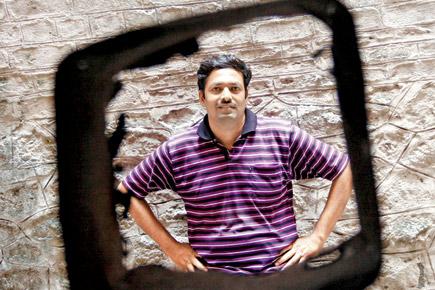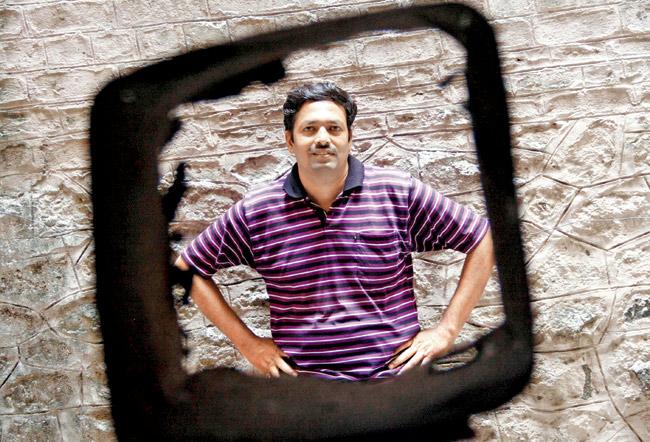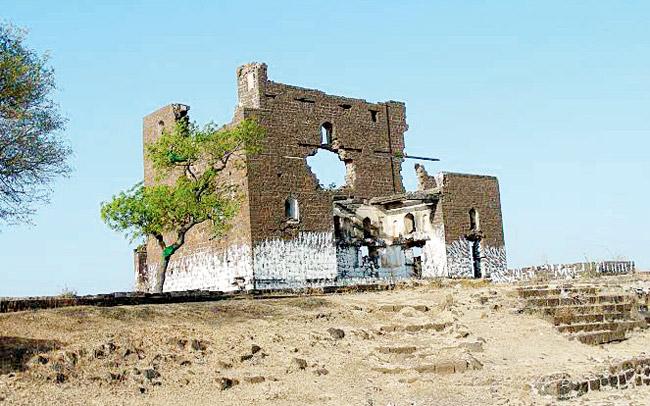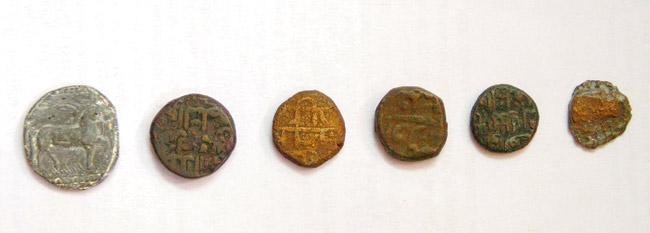Archaeological researcher, Sachin Joshi, rediscovered two forgotten forts from the medieval era, adding to his tally of five forts he had found in the past; the structures have shed light on several cultures lost to history since

Sachin Joshi
Every Diwali, children’s inherent fondness for forts can be seen, as they make or buy ‘kilas’ (forts) as part of the festive celebrations. But for archaeological researcher, Sachin Joshi, forts are more than a mere childhood passion.

Hunting for history: Archaeological researcher Sachin Joshi
Joshi has made it his life’s mission to unearth old and forgotten forts, and amongst his many discoveries, the two ancient forts from the medieval era (7th to 18th century) are included.
ADVERTISEMENT

When Joshi came upon this water tank at Dasgaon, he knew he wasn’t far from the old fort’s ruins
His most recent finding, the Manjarsumba fort is a 14th century structure built by Nizam Shah, who ruled in the nearby Ahmednagar. Fascinatingly, Joshi located the fort in 2011, after he came across brief mentions of it while going through some old documents of the British-era.

A rare find at any fort, this is a ‘mottha’, or a two-storey structure at the Manjarsumba, used to circulate water all over the fort
Joshi found clues in the Maharashtra Government Gazetteer, compiled by the British around the year 1860. Since then, however, there have been no more mentions of it, and no one had conducted a research on it so far, said Joshi. It was in the same document that Joshi found clues to a second fort — Dasgaon, near Raigad.

The Manjarsumba fort is a 14th century structure built which was mentioned in old British-era documents, but has since been lost to history
While Joshi came across the first clues as far back as 2007, it has taken him years to conduct his research and eventually find the remains of the two forts. Joshi, who had discovered five other forgotten forts in the past (Panhalghar fort near Raigad, Mohangad aka Jaslodgad near Pune, Manikdurg, Kasardurg and Gudhe aka Navate near Ratnagiri — all discovered between 2006 and 2010), said, “We have to go through a real struggle sometimes. To find just one fort it takes more than a year — we have to visit the site repeatedly to find it, and with every visit we discover more.”

These rocks are all that remain of the walls of the 17th century Dasgaon fort, where Joshi also found broken remains of pots, water tanks and several ancient coins
Joshi, whose interest in forts intensified when he joined Bharat Itihas Sanshodak Mandal (BISM, an institute providing resources and training for historical researchers), is currently completing his PhD research on the two forts now (Manjarsumba and Dasgaon).

2000-year-old coins found by Joshi during excavations. Such coins are excellent signs of ancient cultures. Pic/Shashank Sane
Mahesh Tendulkar, a BISM member and fellow historian, said of Joshi’s research, “These forts were found by Sachin —while there are mentions of them in ancient documents, no one had managed to find them before this. Perhaps, it was only the local villagers who knew of the forts or what remained to them. Sachin took great pains to find the forts, and full credit goes to him for doing so. It is a great development for the people who study history.”
While researching, Joshi finds citations of the forts in old documents, and then attempts to locate them with the help of Google Maps. This is a much quicker process than trying to read and interpret maps found in ancient documents. Once he figures out the approximate location, Joshi and his team visit the surrounding areas and attempt to speak to the local villagers to glean more information. However, even that can be a challenge sometimes.
While locating the Dasgaon fort, they went to nearby villages and asked the locals if they had seen any fort or the remains of a fort nearby, but no one had responded positively.
It was only after extensive exploration of the area that the team spotted an old water tank that hinted at the presence of a fort nearby.
The process was even harder with the Kasardurg fort. “When we reached Kasardurg, we asked an elderly villager whether he could recall the Kasar tribe or any remains of their fort. He said he remembered one such tribe located in a village, about two km from there. He warned us, however, that only a few people from that tribe were remaining and they are not known to be very social. When we went there, the people ran away when they saw us. We waited for them for a day, and also tried to find them in the dense forest surrounding the village, but in vain. In the end, we had to find the fort ourselves,” Joshi recalled.
Lost cultures
At each of the forts, Joshi’s team found several artefacts and remains of cultures lost to history. At the Manjarsumba fort, he found a surprisingly sophisticated water supply system. “One of the best things about Manjarsumba fort is that it had a two-storey structure —called ‘mottha’ — that was used to circulate water all over the fort. This is a very rare finding in any fort,” said Joshi, who add that they also discovered the fort’s main gate in an intact condition, as well as remains of Chinese and Persian-style artefacts.
At Dasgaon, the 17th century fort built by Marathas had remains of pots, water tanks, coins, etc. “The fort was originally named Bhopalgad, but was renamed by the British as Dasgaon,” added Joshi.
 Subscribe today by clicking the link and stay updated with the latest news!" Click here!
Subscribe today by clicking the link and stay updated with the latest news!" Click here!







